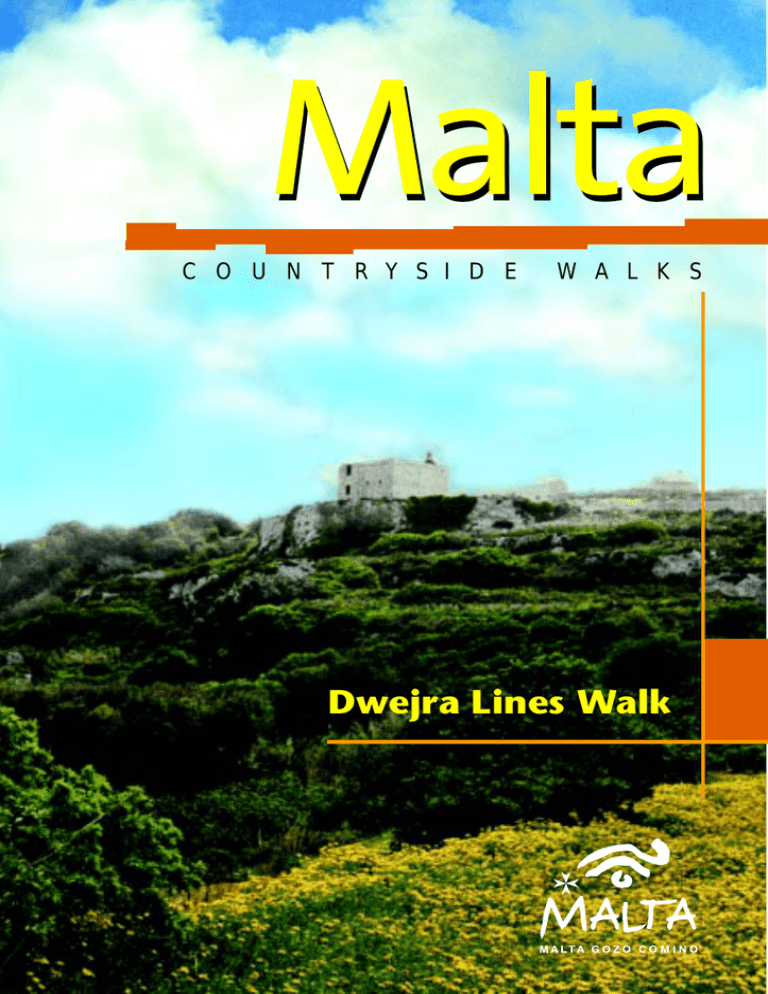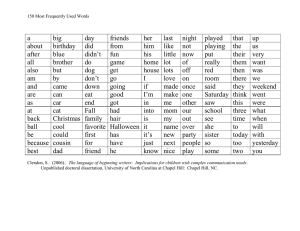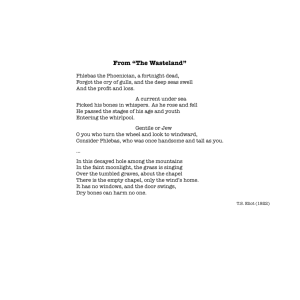
Malta
C O U N T R Y S I D E
W A L K S
Dwejra Lines Walk
Introduction
The walk starts at Mgarr (Malta) and ends at Mosta. The walk passes
through the hamlet of Bingemma until it reaches the Our Lady of
Itria Chapel. From the chapel site, you can enjoy excellent views of
the Bingemma plains as well as a cluster of punic tombs dug out of
the hillside. The highlight of the walk is the Dwejra Lines, a section
of the Victoria Lines. This is a complex network of 19th century linear
fortifications and a unique monument of military architecture.
The walk goes down through arable land to the Speranza Valley
and Tal-Isperanza Chapel. According to legend, the chapel owes its
beginnings to the miraculous escape of a young peasant girl from
the hands of invading corsairs. The walk passes through the quaint
streets of the Mosta village core and ends near the famous Rotunda
Church.
The text, read in conjunction with the route map (found in the centre pages) enables you to follow the route more easily.
How to get there
The starting point is at the village of Mgarr (Malta), near the Parish
Church. The walk ends at Pjazza Rotunda, Mosta.
Public Transport
From Valletta, the Mgarr main square is the last stop on bus route 47.
For the return journey from Mosta take;
• Route bus 43, 44, 45, or 50 to Valletta
• Route bus 65 to Sliema, St Julians, Naxxar, and Mdina.
• Route bus 86 to Bugibba, Qawra, Rabat and Mdina.
Length of walk (excluding visits to temples and Art Collection)
is 10 km.
Duration is approximately 4.5 to 5 hours.
M A LTA C O U N T RY S I D E WA L K S
The walk starts from the main
square of Mgarr. By far, the most
prominent feature in the square is
the Mgarr Parish Church. The
church, dedicated to the
Assumption of Our Lady, was built
between 1912 and 1946 on the site
of an older chapel. Apart from its
architectural beauty, it boasts
Favray paintings as well as other
artistic sacred artifacts. You can
also visit the Tempra Art Collection
within the Mgarr Local Council
offices in Triq Sir Harry Luke.
From the main pjazza, walk along
Triq Fisher towards the village
primary school. You will soon
notice a sign indicating the way to
the Ta’ Hagrat Temples (3600-3000
BC) situated in Triq San Pietru. You
may wish to make a detour to visit
Ta Ha©rat Temples - M©arr
M©arr church belfry
the temples. (Note that the site is
not normally open to the public. A
visit may be arranged by prior
appointment; tel 2145 4125 or 2145
4562).
The walk proceeds along Triq Fisher,
past the primary school, until a
cross roads is reached just outside
the village. Turn right and take the
road leading to Bingemma.
The fertile fields, greenhouses and
drip irrigation systems indicate
intensive agricultural activity.
Large fields are subdivided into
smaller fields since, when a farmer
dies, the land is divided amongst
his children. Smaller fields make
the use of agricultural machinery
more problematic thus making
agriculture less viable.
1
used for livestock, as well as for
man. People helped themselves to
water from the hand pump on top
of the reservoir. The base of the
hand pump is still visible.
Continue walking uphill where you
will soon reach the Bingemma
water pumping station on the
right. 1 Note the terraced fields.
Terracing is typical of various valley
sides across Malta and Gozo. It is
an efficient way of preventing soil
erosion.
As you walk towards the Victoria
Lines, note the variety of
windbreakers used, including rows
of prickly pears, screens of canes
and wooden pallets. These
windbreakers protect the fruit
trees and horticultural crops.
A small roadside shrine bearing the
effigy of Our Lady dating to 1869,
heralds the small hamlet of
Bingemma. On the right, you can
see what looks like a circular stone
platform about a metre above road
level. This is a village water
reservoir complete with a large
stone trough at road level. This was
2
The road, partly cut into the cliff
face, continues uphill. On the left,
a water course covered in brambles
and ivy flanks the road. Ahead of
you, note stretches of wall built
along the ridge. These are the
Victoria Lines. They were built by
the British along a fault which cuts
across Malta from coast to coast.
Further on, to the left, there is a
chapel at the edge of a rocky
outcrop overlooking the valley.
M A LTA C O U N T R Y S I D E WA L K S
Our Lady of Itria Chapel Bingemma Gap
The chapel was built in 1680 by the
Xara family and dedicated to Our
Lady of the Way or Our Lady of Itria,
as is commonly known. A path to
the right of the church leads to
what looks like a cave but is
actually a Punic tomb. You can see
the inside of the tomb through an
iron gate which protects the
entrance.
From the chapel site, you can enjoy
excellent views of the Bingemma
plains below. On the opposite side
of the valley, you will see various
openings in the cliff face forming
a veritable honeycomb of caves
that may date back to the Bronze
Age. Studies on style and
measurement reveal that they
were used during the Punic era, as
well as by early Christians. During
World War II these rock tombs
offered refuge to the Mgarr
farmers.
From here the Victoria Lines are
clearly visible. The wall crosses the
valley and continues on the hill
opposite. This stretch of wall is the
Dwejra Line. The wall has been
recently restored.
3
Victoria Lines
The complex network of linear
fortifications, known collectively as
the Victoria Lines, cuts across the
width of the island north of the old
capital of Mdina. It is a unique
monument of military architecture.
When built by the British military in
the late 19th century, it was designed
to present a physical barrier to
invading forces landing in the north
of Malta and intent on attacking the
harbour installations so vital for the
maintenance of the British fleet,the
source of British power in the
Mediterranean. Although never
tested in battle, this system of
defences spanned across some 12
kilometres of land and combined
different types of fortifications forts,batteries,entrenchments,stop
walls, infantry lines, searchlight
emplacements and howitzer
positions. When initiated in the
1870s the defences were limited to
a series of three detached forts
placed along the length of the
natural escarpment - at Bingemma,
Mosta and Madliena – and the
4
position was called the North West
Front. The various works were
eventually linked together by means
of infantry walls and the whole trace
re-named the Victoria Lines in 1897,
to commemorate Queen Victoria’s
diamond jubilee. This defensive
‘frontier’ constituted a unique
ensemble of varied military
elements all brought together to
enforce a defensive strategy that
exploited the advantages of
geography and technology as no
other work of fortification ever did
in the Maltese islands.
The active role of the Victoria lines,
however, was short lived, as the whole
effort was overtaken by rapid changes in
technologyandstrategy. Asaresult,their
military significance was lost and most
of these works were abandoned in 1907.
In recent years, the Restoration Unit
of the Works Division took the
initiative to restore this extensive
network of fortifications.
M A LTA C O U N T R Y S I D E WA L K S
Nearby, a pointed stone marker,
some 1.5 metres high, had inscribed
on it the distance, in miles from
Valletta. These milestones were
installed in the second half of the
19th century by the British Colonial
Government to prevent cab drivers
from over charging British
servicemen. This was in a sense the
forerunner to the taxi metre.
During World War II all similar
milestones had their markings
chipped away. This prevented their
use by the enemy should there
have been an enemy invasion.
Behind the Mgarr locality panel
nearby, there is a rough path
leading down to the stop wall
across the valley. 2 Walk along this
path.
The path skirts a group of trees,
mostly Aleppo Pines and the
Wattle tree (Acacia cyanophylla).
Beyond the bridge, there is a
second vantage point overlooking
the valley below. The view from
here extends from the chapel,
down to the rolling expanse of
agricultural land, right up to Mgarr
Village. Note the small farmhouse
below the chapel across the valley
and a large pigeon house or
‘columbarium’ built in the cliff face.
The use of pigeons for sending
messages dates back to Roman
times. They were also used for
culinary purposes. Nowadays,
pigeon-racing is a popular pastime.
The rough path keeps going uphill
with the defensive wall on the left.
A strip of land between the path
and the wall carries aleppo pines
and extends along most of the
Dwejra lines.
5
The v-shaped culvert collecting
water run-off from the road leads
to the valley below. You will soon
come upon two carob trees close
to a peach orchard on the right.
Directly opposite this orchard on
the left of the path, a gaping hole
in the ground indicates the
entrance to a tomb, which escaped
destruction when the Lines were
built. A few paces further, a ramp
leads to a vantage point on the
wall overlooking Mgarr, Mellieha,
and Gozo beyond them. The
chequered countryside clearly
indicates that most of Malta’s
agricultural land is dry-farmed i.e.
it depends solely on rainfall. Such
land amounts to approximately 76
per cent of farmed land. Water is
definitely a limiting factor!
Continue along the path. 3 On
the right, there is a stretch of
garigue land and beyond, on the
horizon, you can see Verdala Palace,
Rabat, Mdina and Mtarfa. Along
Cart ruts at
Bingemma Gap
6
M A LTA C O U N T R Y S I D E WA L K S
the path, a number of
military structures form
part of the defensive
system of the Lines. A
cottage,
Marymount,
formerly an officer’s
quarters, comes into view.
Directly in front of it to the
left of the path, there is a
well head. If you walk up
to the wall, you will see the
dry ditch, partly reclaimed
into an orchard, and the
rolling countryside beyond.
A few metres further, to
your left, you will reach an
asphalted road which leads
to Bingemma or Rabat. 4
A section of Victoria Lines overlooking Bingemma Gap
7
The path continues through a
number of ex-military buildings
which are now being used as
farms. The path now is asphalted
and starts going slightly downhill
past a Boy Scouts building. Where
the road crosses sharply to the
right, you can climb to the corner
view point from where you can see
the towering stadium lights of the
Ta’ Qali National Park, the town of
Mosta crowned by the church and
further away on the ridge, Naxxar.
Entrance to an underground gallery
- Dwejra Lines
A few metres downhill to the left,
you will arrive at an opening in the
wall. This is a fortified bridge. Walk
across the bridge and turn sharply
to the left. 5 You will pass by a
well head, covering the Dwejra
reservoir. The down hill road is now
in open country. To the right the
trees on the small hillock hide a
fireworks factory.
Further downhill you reach the
main busy road, which leads from
Mosta to Mgarr. As this is a busy
junction and as this walk continues
directly ahead through the country
road, you must take great care in
crossing the road. It is suggested
that the point of the junction
where the guard rail commences,
is the most appropriate place to
8
M A LTA C O U N T R Y S I D E WA L K S
Almost 1km long this ditch surronds the north
facing front of the Dwejra defences
cross the main road as oncoming
traffic from both sides, can be seen
clearly.
Having crossed over, walk along
the quiet country road hewn
through the rocks. 6 Soon, you
can see the Mosta
Dome in the distance
and, beyond that, the twin belfries
of the Naxxar Parish Church.
The fields on both sides of the road
are dry farmed. A few small
vineyards dot the landscape. Soon
you reach, a large rocky outcrop on
the right. Note
how man has
utilised this rocky
hillcock by digging
out in its side a
number of shelters.
The rubble walls
enclosing
the
small fields vary in height. The
most common crop grown here
seem to be cereals, although small
patches of vegetables are noted in
spring and in winter. Along the
9
M A LTA C O U N T RY S I D E WA L K S
road, there are rows of prickly pear
trees acting as windbreaks. This
species originated in America but
is now found throughout the
Mediterranean.
Further on, you can see Targa
Battery consisting of the two rows
of long sheds. Turn right at the next
junction and proceed downhill. 7
When you see that the way is clear,
cross the road and make for Triq
Patri Guze Delia directly ahead. 8
The fields on your right slope gently
to Wied ta’ l-Isperanza (Speranza
Valley). Continue along this road
until you reach a right turning into
Triq il-Kappella ta’ l-Isperanza at the
end of which there is a bridge
leading to Speranza Chapel.
From the bridge you can appreciate
the lush vegetation of the valley.
Note the wide variety of trees
including fig, pomegranate, carob,
aleppo pine, stone pine, mulberry
and almond, as well as the exotic
species of eucalyptus and oleander.
Beyond the bridge, there is a flight
of steps descending to a cave
beneath Speranza Chapel
Looking to the right,
you can see the
Mtarfa ridge as well
as the majesty of the
Mdina
skyline.
Further on, you pass
by a couple of small
farmhouses until you
reach a busy road
junction.
“Speranza” chapel
from the valley
12
M A LTA C O U N T R Y S I D E WA L K S
Detail of the facade of the “Speranza” Chapel
The Legend of Wied ta’ l-Isperanza
The name of this chapel and the valley
owes its origins to a popular legend. In
the middle of the 18th century, corsairs
were still operating in the
Mediterranean. The sea around Malta
was no exception and apart from
landing on our shores to draw water,
they never missed a chance of raiding
the countryside. At that time, according
to tradition, a number of farmers were
working in the fields in the Burmarrad
area where irrigation water was readily
available.
As
Burmarrad is close to
the coast, the keeping
of a watchful eye by
farmers for intruders
was a necessity. One
day the alarm was
raised when a group
of corsairs were seen
moving upstream in the valley. The
farmers ran for their lives towards the
safety of the nearby Mosta village.
However one of them, a young lady
could not keep up with the rest of the
farmers. Panting, running upstream,
almost paralysed with fear, already tired
from working in the fields, she was soon
separated from her colleagues. She
heard the melée of the approaching
corsairs rushing after her through the
canes. The village was near but the
corsairs were closer. She was at her wits’
end. She looked around, saw the gaping
mouth of a cave covered by a large
cobweb and crawled into the cave.
Pressing herself into the shadows of the
damp rock face of the cave she fervently
prayed to Our Lady to save her. The
maiden hair ferns clinging to the rock
face of the cave accentuated the
shadows and the darkness of the cave.
The spider continued weaving its web.
The corsairs looked frantically for the girl
but could find no sign of her. Had the
girl acquired new strength? Could she
be hiding? But where?
The cobweb was
blocking the entrance
to the cave and so no
one could possibly be
hiding in there. They
were very close to
Mosta and by now the
alarm in the village
would have been raised. Their seacraft
was very far away. Fearing an attack by
the villagers, they decided to beat a
hasty retreat and ran back to the coast.
After assuring herself that the danger
was over, the girl dashed out of the cave
and ran home. She attributed her
miraculous escape to our Lady to whom
she decided, with her family’s money, to
build a chapel dedicated to il-Madonna
ta’ l-Isperanza (meaning Our Lady of
Good Hope).
13
This chapel, built in 1760
has a Renaissance style
and carries three statues
in its façade. The middle
one is of Our Lady of Good
Hope with the Child Jesus
holding an anchor - a
symbol of hope.
The side niches carry the
statues of St. Joseph and
of St. Anthony of Padova.
The coat of arms of the
Bishop in whose time the
church was built, is clearly
seen above one of the niches. The
lantern above the chapel was a
later addition.
The chapel is kept in a very good
condition and is in regular use.
Going down the short flight of
steps to the cave below, you can
14
see through the iron grating, a
statue of a girl in a kneeling
posture deep in prayer. Pot plants,
including ferns, adorn the cave. The
other statues are of the evangelists
Luke and John. Above the cave, in
a small niche in the façade, there
is a statue of St. Michael.
M A LTA C O U N T R Y S I D E WA L K S
If you stroll to the left behind the
chapel, you end up near one of the
pumping stations of the Water
Services Corporation. Upstream,
you can see a small dam across the
valley. This contains rain water in
the valley allowing it to percolate
into the water table.
Bezzina, straight ahead, and then
turn left into Triq Salvu Dimech. At
the end of this road, at the corner,
there is a statue of St. Thomas. It
enhances the simple but exquisite
architectural design of this country
house. The timber balcony is above
normal in size whilst its rounded
sides are also uncommon.
Timber balconies are a particular
feature of Malta’s streetscape.
Balconies increase the indoor living
Statue of St Micheal over the cave
underlaying “Speranza” Chapel
The walk continues along Triq
Speranza. You will soon enter the
village core. Note the variety of
small ceramic images or plaques
of saints decorating the
doorways. Triq l-Isperanza ends in
a junction. Take Triq Kurat
15
space and allow also participation
in the street life. They also limit the
heat intake of the house from the
hot summer sun.
Turn to your right into Triq Tabib
Tumas Chetchuti and then on to
Triq il-Kbira. After a few metres
along this busy road, you reach
Pjazza Rotunda and Mosta Church.
16
M A LTA C O U N T R Y S I D E WA L K S
Mosta Church
The imposing façade of the Mosta
Church, also referred to as the
Rotunda, is adorned with stone
carvings of classical Greek
inspiration. On the site occupied
by the Rotunda, there stood
another much smaller church built
in 1614. As time progressed, this
village of farmers felt the need to
build a bigger church. It was
decided to build the Rotunda as
designed by the Maltese architect
Giorgio Grongnet de Vasse. The
new, bigger church was to be
constructed around the older
church and when completed the
old one would be dismantled. The
old church itself was used to
support the scaffolding. After 27
years of toil, volunteer work and
17
donations by the villagers, the
Rotunda was completed in 1860.
The external height of the building
(to the top of the lantern) is 200 ft
(61 metres). The temple is
dedicated to the Assumption of
Our Lady.
With an internal diameter of 130 ft
(39.6 metres), the dome is the
second largest in the world after the
Vatican St. Peter’s at 138 ft (42.1
metres). The dome ceiling is notable
for the coffering, consisting of
diagonally-set lozenges which
spiral upwards, decreasing in size as
they reach the apex.
In the church, there are a number
of paintings depicting scenes from
18
Christ’s birth. These are by worldrenowned artist Giuseppe Calì and
are reproduced on Christmas cards
across Europe. Other paintings
worthy of note by the same painter
are ‘Santa Monica’ and ‘The Death
of St. Augustine’.
Unfortunately, the dark years of
World War II did not spare this
church. On the 9 th of April 1942,
at approximately 16.40 hrs, a
bomb dropped by enemy
aircraft pierced the dome and
fell in the temple to the horror
of a number of worshippers.
Fortunately, the bomb did not
explode and no one was hurt.
This event is still illustrated in a
small exhibition in the sacristy
of the Church.
M A LTA C O U N T R Y S I D E WA L K S
A reminder of WWII is the large
underground wartime shelter
situated under the church parvis
and under the square. The entrance
is through a trapdoor just below
one of the staircases leading to the
church parvis. It is occasionally
opened to the public.
The Local Council and the police
station are housed within the
modern building behind the
church. The numerous shops and
catering establishments in the
area are a proof of a vibrant
commercial activity.
Oleander
The walk ends
here. You can take
a bus to Valletta
(from bus stop
beneath the row of
ficus trees) or to St.
Paul’s Bay and
Mellieha (from bus
stop
on
the
opposite side of
the road).
19
Tips for the road
This route is suitable for hikes and for pedal bikes. Only when
crossing the stop wall on the Dwejra Lines, one is advised to
dismount and to proceed on foot.
The local weather forecast should be checked before setting
off as there is hardly any shelter from adverse
weather conditions along the route. A raincoat can
come in handy in inclement weather.
Allow enough time to complete the walk in broad
daylight. Make allowances for time required for resting, taking of photographs and observing nature.
It is advisable to wear appropriate footwear and a hat.
A packed lunch and a bottle of water are also recommended.
Always follow the designated route. Short cuts are to
be avoided as many fields are privately owned.
Some rubble walls are marked with blotches of white
paint and may also carry the letters RTO. These markings indicate private property.
If one intends entering parish churches, proper attire
is to be worn.
Respect the fragility of the countryside. Do not climb
over rubble walls or throw stones in valleys or over
cliffs. Do not take souvenirs from historical sites or
from the countryside. Do not disturb animals, plants
or their natural habitats. Leave your footprints behind
you and nothing else.
Be culturally sensitive and respect local customs. Take
photographs but respect the privacy and dignity of
others. Ask permission before photographing people.
Bird trapping and hunting are practised in the countryside. There
are, however, strict regulations determining areas where such
activities are permitted and times of year where no such activities are allowed.
Facilities
In both Mgarr and at Mosta, there are the facilities you would expect to
find in a town - catering facilities, phone booths, public conveniences, banks,
the local council office and a police station.
In Mosta, there are also internet café facilities and the District Health Clinic.
Useful telephone numbers.
Emergency & Rescue
Ambulance
Fire
Mgarr Police Station
Mosta Police Station
Mgarr Local Council
Mosta Local Council
Mosta Health Centre
Malta Tourism Authority
Telephone enquiries
112
196
199
2147 3422
2143 3882,
2143 3800
2152 0011
2141 6841
2143 3256,
2143 2062,
2141 1065
2291 5800
1182
www.visitmalta.com
All rights reserved. No part of this
publication may be reproduced,
stored in a retrieval system, or
transmitted in any form or by any
means, electronic, mechanical,
photocopying, recording or
otherwise, without the prior written
consent of the copyright holder.
Enquires are to be forwarded to the
Malta Tourism Authority.
Feedback and comments are welcome.
Write to info@visitmalta.com
Date of Publication: October 2002
Text:
Joseph Borg
Photos:
Alex Bugeja
Map:
Andre Micallef Grimaud
Text on Victoria Lines (Page 4):
Stephen C. Spiteri
Produced by:
Product Planning and
Development Directorate,
Malta Tourism Authority
Dwejra Lines Walk
Enjoy countryside views as you walk along the Dwejra Lines, a section of the Victoria
Lines. These are a complex network of 19th century linear fortifications. Learn about the
history of Our Lady of Itria Chapel and the legendary beginnings of Tal-Isperanza Chapel.
The walk passes through the quaint streets of the Mosta village core. Admire the
magnificence of the Mosta Dome and the upward spiraling pattern of the dome interior.
Other walks in the series
Ba˙rija Walk
Passing through
Ba˙rija - Ba˙rija Valley - Mta˙leb
Tal-Vigarju Cliffs - Fiddien Valley - Rabat
Girgenti Walk
Passing through
Buskett - G˙ar il-Kbir - Girgenti Valley
Si©©iewi - Il-Maqluba – Qrendi
Marfa Ridge Walk
Passing through
G˙adira - Marfa Ridge - Ponta ta’ l-A˙rax
Da˙let ix-Xmajjar - Ir-Ramla Tat-Torri - Armier Bay
Marfa - Paradise Bay - Ras il-Qammieg˙ - Red Tower.
Tas-Sil© Walk
Passing through
Marsaskala - St. Thomas Bay - Tal-Munxar
Xrobb il-G˙a©in - Delimara - Tas-Sil© - Marsaxlokk.
The project is being launched in 2002, the World Tourism Organisation’s
International Year of Eco-Tourism.
PRICE
Lm1
Malta Countryside
Walks is a partnership
project of:




